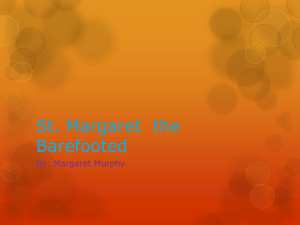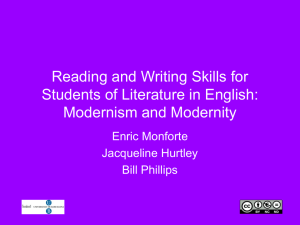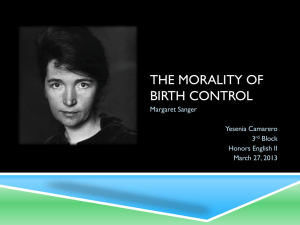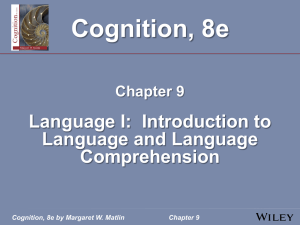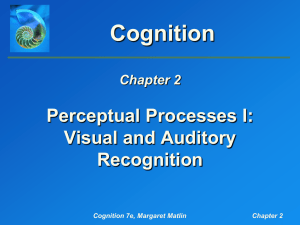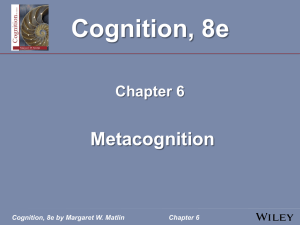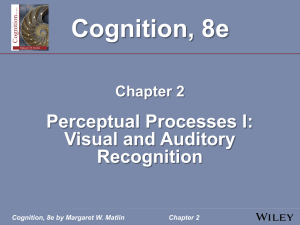Introduction to Hagiography and the Life of St
advertisement
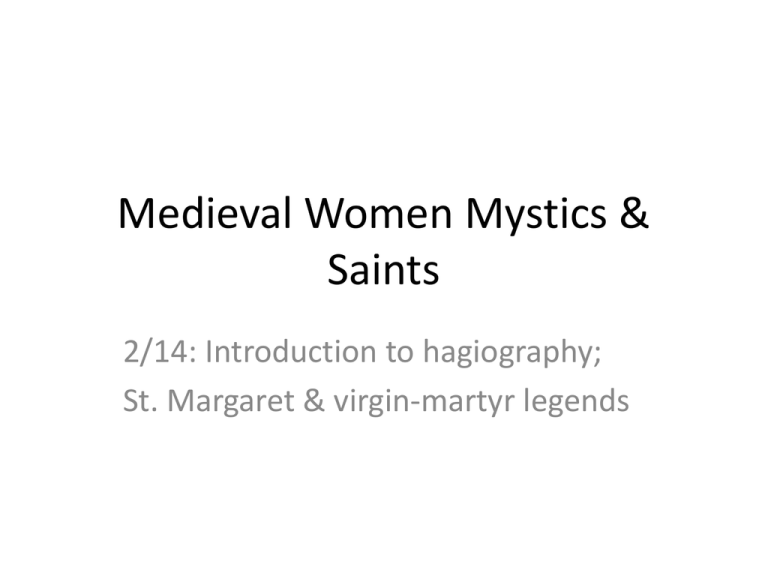
Medieval Women Mystics & Saints 2/14: Introduction to hagiography; St. Margaret & virgin-martyr legends Saints’ lives tradition Hagiography: Hagios “holy” + graph “writing” = writing of saints’ lives The life of Christ provides the model for the saint who follow his path. Christ (& saints) = exemplary Literary features of hagiography Saints’ lives: • Are highly structured and formulaic • Often begin with etymology and allegoresis • May include historical detail (even if the saint is unhistorical) • Feature eye-witness testimonies of healing miracles, incorruptible bodies, and even “victorious” martyrdoms leading to mass conversions. The Body of the Saint • Suffers (asceticism or torture) but gains spiritual rewards • Bridges physical & spiritual worlds • Has healing and intercessory power, through relics • Is present in the saint’s passio The virgin-martyr legends “For marriage has its reward thirtyfold in heaven; widowhood, sixtyfold; virginity, with a hundredfold, surpasses both.” - Holy Virginity Church doctrine supported virginity as the better, more reasonable choice: • Paul (1 Cor 7: 9): “for it is better to marry than to burn.” • Jerome (4th c.): “the command to increase and multiply is fulfilled after the expulsion from Paradise.” Virginity as the answer to the problem of the female body Medieval physiology held that women’s bodies, compared to men’s, were: • weaker • less efficient • more out-of-control • more imbalanced. Humoral physiology also claimed women’s bodies were more subject to lust, and compromised in their ability to reason . A medieval women’s book club: The Katherine Group & the Life of St. Margaret • A single group of religious prose works written in the West Midlands of England (c. 1190-1230). • Saint Margaret and its "sister-legends“: St. Katherine of Alexandria and St. Juliana of Nicodemia • Includes a letter on virginity, Hali Meithhad (Holy Virginity), and an allegory on the custody of the soul, Sawles Warde. • Larger manuscript includes the Ancrene Wisse, a guidebook for female recluses, enclosed for life in a cell attached to the wall of the church. Similarities between the legends of Margaret, Katherine & Juliana • Set during Diocletian persecutions, early 4th century in Asia Minor • All legendary (Margaret entirely, expunged from Roman Calendar of Saints in 1969) • “Brides of Christ” • High born to pagan families alienated by parental deaths or conflict • Interrogated and tortured by tyrants who try to get them to abandon their virginity and their faith • Juliana and Katherine face torture on a wheel • Margaret and Juliana interrogate demons • All experience extreme bodily violence • Beheaded in accordance with Roman law, receive martyr’s crown St. Margaret: the setup • Margaret - born in Antioch (Syria), raised in the country. Tends sheep and hears about Christian martyrs. • Theodosius – Margaret’s father and prince of Antioch. • Teochimus – narrator and learned witness to Margaret’s martyrdom • Olibrius - the “Devil’s own offspring,” an idol worshiper and governor of lands that include Antioch The conflict • Olibrius is “dazzled by the beauty of her face and figure.” What does he offer Margaret? She responds with some interesting language. • When he asks, “Do you love and believe in a man who suffered wretchedly and died on a cross?” Margaret reframes the question using inverse logic. • Olibrious becomes furious—and so it begins… Margaret’s imprisonment & temptations • “Maiden, relent and take pity on yourself. Think of your youth and your comely figure, of your beautiful face.” • “Do what I want and worship my idols and you shall be well rewarded, more than the highest in rank in my court, with all the possessions that I have in the world.” • When Olibrius then threatens torture and death, Margaret responds calmly. Who seems in control here? Spectacle, torture & violence • “’Strip her stark naked and hang her up high, and flog her bare body with biting rods.’ The accursed villains laid on so violently that her fair skin was broken all over and streamed with blood.” • Margaret : “If my body is torn apart, my soul will be at peace…” • Olibrius “angrily ordered that she should be suspended still higher than before, and that her fair flesh should be ripped and torn with a sharp sword and with hooks of iron.” • “While she spoke, she was being so lacerated that neither the cruel governor nor anyone else there could bear to look at her, so great was their horror at the torrents of blood that streamed from her.” • Question: Why all the gratuitous imagery? And what does Margaret pray for during all of this spectacular violence? Virgin restraint vs. pagan frenzy • The virgin’s metaphoric tower • Olibrius: “heathen dog,” “loathsome fiend,” “raging lion” • Margaret’s contemptus mundi vs. Olibrius’ fury • She asks God to protect her: “guard my virginity inviolate for yourself, my soul against sin, my reason and wisdom against senseless idols.” • Her intact body (virginity) || her intact mind (reason, unsullied by sin) || her intact faith • The medieval head/body analogy • Margaret prays to see “the wicked devil who is waging war against me.” The Dragon • This exciting passage in the legend may have helped its popularity. • Read about the “gilded” dragon and the threats and temptations it represents. Another depiction of St. Margaret and the dragon The hellmouth Dragon swallows Margaret …is this an image of: • The hellmouth (into which she later casts another demon) • A sexual threat (we later learn the dragon was trying to attack the virtue of her virginity) • Birth (Copies of Margaret’s legend given to pregnant women in the form of amulets) Demon confessions • Margaret vanquishes the dragon with the sign of the cross, then roughs up a second demon • After a sign from heaven, Margaret begins the inquisition • The demon reveals his secrets: pursuit of the chaste through conversations about love of God, how the fire of love overcomes reason, how one can sin while sleeping! • Weapons to fight the demon • Read: “Margaret, maiden, what will become of me? My weapons—alas!...” Why is she best suited to have this victory? • Demonology 101: the nature and habits of demons Mass conversions & martyrdoms • After Margaret casts the demon back into hell it’s back to torture, and everyone in town comes out to see it. • Burning for God: Read section in which Margaret is hung up and burned – how does Margaret reframe this scene? • Holy bath: Olibrius’ vessel of water = baptism. • Earthquake (cf. Christ’s Passion), martyr’s crown • Mass conversion and martyrdom (St. Augustine considers martyrdom a “baptism of blood” that gave remission of all sins). The final prayers • Margaret’s prayers : “whoever writes a book on my life, or acquires it when written, or whoever has it most often in hand, or whoever reads it aloud or with good will listens to the reader, may all have their sins forgiven at once, ruler of heaven.” • What else are we told you can do to get her to intercede on your behalf? • Saintly relics: her body, bones and even a book dedicated to her life will be able to heal a man’s sins. An execution or wedding? • The dove/Holy Spirit bids her: “Come now, for I am waiting for you, bride to your bridegroom. Come, beloved, to your life; I long for you to come. The brightest chamber is ready; beloved, hasten to me. Come now to my kingdom, leave that lowly race, and you will rule with me all that I possess.” What inverse logic is operating here? • Margaret tells her executioner, Malchus, to carry out his work. • Mass conversions and healings; angels singing. Margaret’s body • Teochimus bears her body away to the city of Antioch to her grandmother’s house. He also claims eye-witness account to everything and says he wrote everything down. • Margaret dies on July 20th • End of the saint’s life we read that the audience is a listening audience, which makes sense, given the alliterative nature of the text. Some Questions • The extreme violence in Margaret’s legend may be surprising in a religious text, some of which seems to be sexualized violence. Why do you think all this is necessary to the saint’s life? • Margaret is a rather flat, non-developing character in her life story, and even the imagery of violence and torture directed towards her by both the tyrant Olibrius and her demonic enemies are not very different from other virgin saint’s lives (e.g., Katherine; Juliana). Why do you think this is so?
